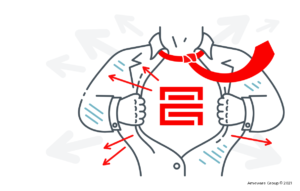BIG DATA REAL LIFE EXAMPLES.
For those who don’t like to go deep into the concepts, this article offers tangible examples of Big Data and IoT applications.
Tesla is the first one that comes to mind. Absolute leader on the market, Tesla’s electric cars are driving on the roads all over the world and collecting mountains of data using its cameras and all kind of sensors. They can even pick up a driver’s hand placement on the instruments and how they are operating them. Studying drivers’ habits, using Machine Learning mechanisms, Tesla is able to warn about crashes and even provide a driverless mode (driving without human’s help). With 5G’s coming into play, the cars can respond promptly and exchange data faster.
Another example, which pops up even more often, considering that many people use it in everyday life, is virtual assistants such as Siri, Alexa, Cortana. They, too, collect and process a massive amount of information and belong to the IoT and Big Data.
BENEFITS.
The IoT provides two valuable Big Data components. It’s the immediate analysis and predictive analysis. Doesn’t it sound handy when a service is supplied with spare parts even before a car comes there?
Big Data and the IoT found multiple applications in various spheres of our lives: sport, healthcare, shipping, etc. Able not only to monitor status and provide critical insight, but it can also give an overall performance picture. No matter the use case, their goals are the same.
Goal #1 – Accuracy.
The is no underestimating this. Bad data quality is worth the US approximately $3.1 trillion/year. And not every company has this budget. Accuracy includes deduplication, limit bias, and handling the data in regard to a specific industry. Big Data is yet to evolve in part of accuracy.
Goal #2 – Velocity.
Data collection, as well as its speed, grows fast. Billions of Google searches all over the world are processed as fast as quintillions bytes a day. Isn’t it amazing?
Goal #3 – Types of data.
Until recently, the data could have been stored in well-structured tables (relational databases) or even in spreadsheets. Nowadays, the data like video clips, emails, audio files, social media posts, etc. cannot be correlated this way. A less structured approach allows rapid analysis and provides answers in seconds.
Goal #4 – Tremendous amount of data.
To ensure proper input/output operations per second (IOPS) number, developers have to use distributed servers and use solutions like Hadoop and Apache Spark.
CONCLUSION.
The Internet of Things and Big Data relationship can be tricky. Companies must carefully consider what data they need to collect and which chips and sensors will do a better job for their industry-related purposes. All front-end equipment will bring real value only if the implementation part of the back-end, the analysis itself is developed by experts in this niche. Contact Ameware Group now to get professional insight into your project and help to build a highly qualified team.








